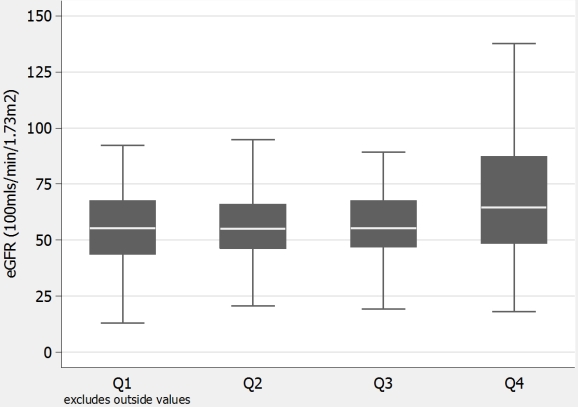The Impact of Donor and Recipient Weight Incompatibility on Outcomes in Renal Transplantation
1Nephrology, Beaumont Hospital, Dublin, Ireland
2Urology and Transplantation, Beaumont Hospital, Dublin, Ireland.
Meeting: 2015 American Transplant Congress
Abstract number: B220
Keywords: Kidney transplantation, Outcome, Weight
Session Information
Session Name: Poster Session B: Obesity/Elderly/Frail
Session Type: Poster Session
Date: Sunday, May 3, 2015
Session Time: 5:30pm-6:30pm
 Presentation Time: 5:30pm-6:30pm
Presentation Time: 5:30pm-6:30pm
Location: Exhibit Hall E
Background: Kidney transplantation has been proposed as an accelerated model of nephron reduction resulting from the accumulation of repeated insults, both immunologic and non-immunologic events. The direct impact of matching the kidney weight (Kw) or donor weight (Dw) to the recipient weight (Rw) has been assessed in deceased and living donors, however conflicting results have been produced with variable follow up. We aimed to evaluate the impact of Dw/Rw ratio on allograft function.
Methods: Between January 2006 and June 2013, 1042 deceased kidney transplants were performed. Of these, 973 recipients were selected after exclusion of recipients with incomplete data and nephron dosing. All patients achieved a minimum follow-up of 1-year. Patients were divided into quartiles (Q) depending on the ratio of Dw/Rw: Q1 (<0.88), Q2 (0.89-1.01), Q3 (1.02-1.23) and Q4 (>1.23). Recipient and donor characteristics were obtained from local transplant database.
Results: Patient profiles varied between quartiles with 74% males in Q1 compared to 74%, 66% and 38% in Q2-Q4 respectively (p<0.001). Ages were higher in the lower quartiles with mean ages (SD) ranging from 50.0 (13.1) in Q1 to 42.4 (18.9) in Q4 (p<0.001). Patients in Q4 had a higher level of eGFR at one year post transplant (median 64.5ml/ml, IQR 48.4 -87.2) compared to Q1-Q3 which had median eGFR's of 55.2, 55.1 and 55.3 ml/min respectively (p<0.001). At five years post transplant, there were no significant differences in the eGFR across four quartiles ( median eGFR of 56.9, 61.7, 57.6 and 60.5 ml/min respectively, p=0.427). There were no significant differences in 1-year allograft (Q1=96%, Q2=97%, Q3=97%, Q4=95%, p=0.857) and 5-year allograft (Q1=88%, Q2=86%, Q3=90%, Q4=88%, p=0.545) survival between the groups.
Conclusion: There appears to be little effect of Dw/Rw ratio on renal function and allograft survival in the short and medium term with only the highest quartile showing significantly better eGFR at 1-year post transplant.
 eGFR at 1-year post transplant for Dw/Rw quartiles
eGFR at 1-year post transplant for Dw/Rw quartiles
To cite this abstract in AMA style:
Wong L, Moran S, Counihan A, Cunningham P, O'Kelly P, Conlon P. The Impact of Donor and Recipient Weight Incompatibility on Outcomes in Renal Transplantation [abstract]. Am J Transplant. 2015; 15 (suppl 3). https://atcmeetingabstracts.com/abstract/the-impact-of-donor-and-recipient-weight-incompatibility-on-outcomes-in-renal-transplantation/. Accessed July 5, 2025.« Back to 2015 American Transplant Congress
